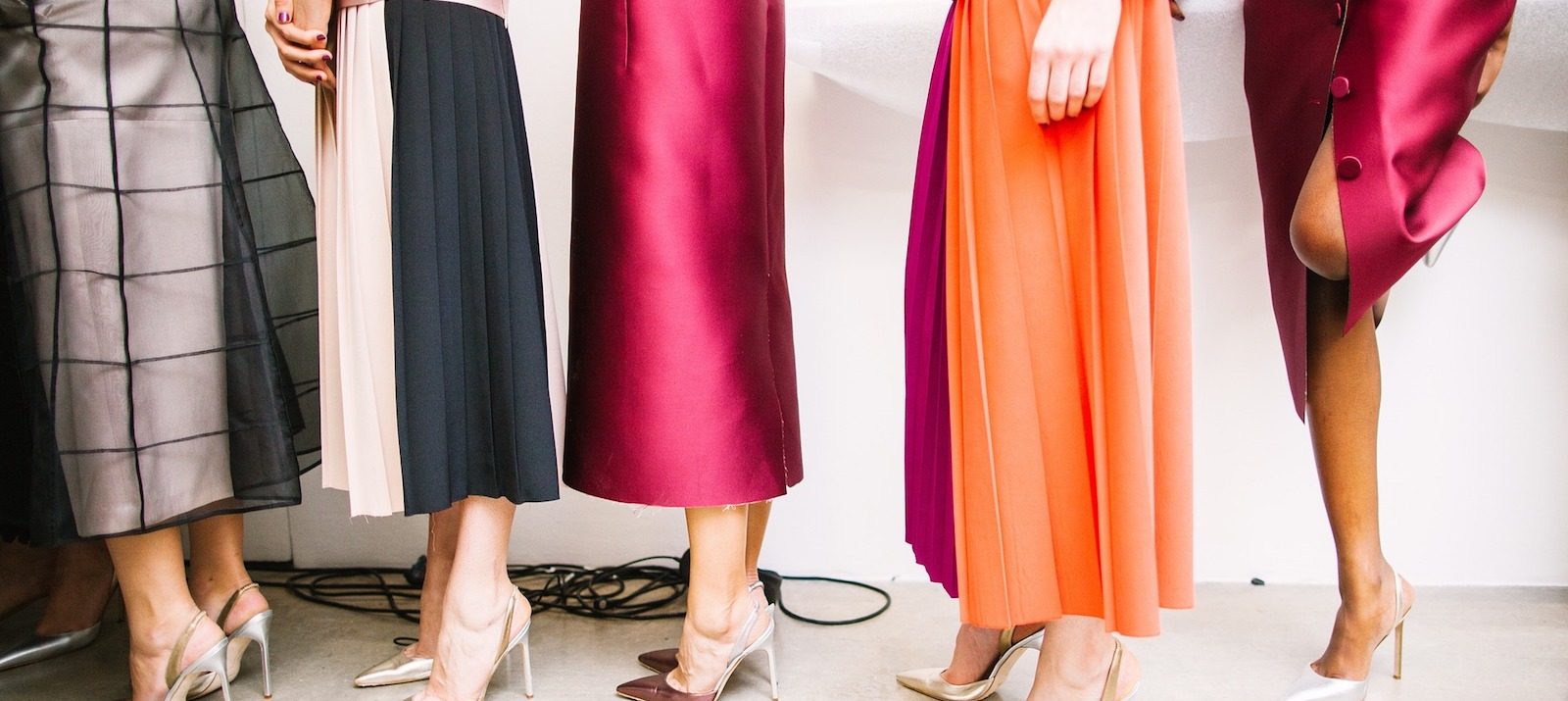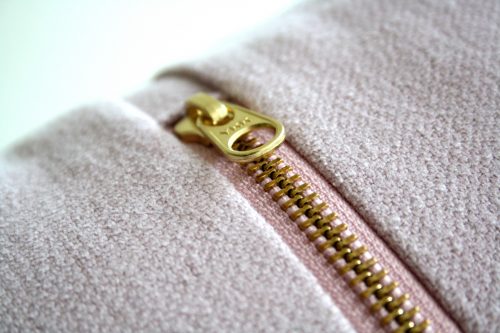Skirts and dresses are often the most delicate items in your closet. Some of them — like the ones you wear to weddings — might also be the most expensive. That means they need some extra care.
1. Choosing the Right Storage Method
Selecting the correct storage method for your skirts and dresses is essential. It’s about finding a balance between accessibility and preserving the condition of your garments. Consider the space you have and the materials of your clothing to determine whether hanging, folding, or using other storage solutions is best.
Hanging Skirts
Hanging skirts is a popular option, especially for those made of delicate or easily wrinkled fabrics. Use hangers with clips or padded hangers to prevent marks and creases. This method keeps skirts visible and easily accessible, making outfit planning a breeze.
Folding Skirts
Folding skirts can save space, particularly if you have limited closet room. This method works well for skirts made of sturdier fabrics that won’t wrinkle easily. Fold them neatly and store them in drawers or on shelves to maintain their shape and quality.
Using Drawer Dividers
Drawer dividers are a game-changer for organizing skirts and dresses in drawers. They help separate and categorize different styles, making it easier to find what you need without rummaging through a pile of clothes.
Stackable Storage Containers
Stackable storage containers are perfect for seasonal skirts and dresses or items you don’t wear frequently. They protect your garments from dust and damage while maximizing your storage space. Clear containers are especially useful as they allow you to see what’s inside without opening each one.
To help you keep them in the best shape while maximizing space, we created this guide on the best ways to store, clean, and organize every skirt and dress you own. It’ll keep everything from your jean skirts to your designer ball gowns in the best possible condition.
2. Edit your collection

Experts agree: When organizing your clothes, you should always take an initial stock of which items you actually wear and which ones have been gathering dust. But it doesn’t have to be quite as dramatic as “purging” your wardrobe.
“I like editing,” says Laura Cattano, a professional organizer in New York. “Editing is a thoughtful process. If you’re going to edit your clothes, you should know your style ahead of time. How do you want to look? What’s your lifestyle? That’s the step everyone skips, and they can’t figure out why they can’t get their closets organized.”
Go through these questions as you look over your skirts and dresses. If you find something that doesn’t fit your look or lifestyle, put it in a pile for Goodwill.
Ann Sullivan, another NYC professional organizer, recommends keeping a “donation bag” right in your closet so that when you spot something you don’t wear, you can eliminate it immediately.
3. Sort skirts and dresses by season

You won’t be wearing heavy tweed skirts when it’s a boiling hot summer day, or sundresses in the winter. Group all your clothing by season and rotate each cluster out as the temperatures change.
Nancy Heller of Goodbye Clutter offers one caveat:
“If you’re a big traveler, the typical season rotation will be a little out of whack. So look at your upcoming trips and do your best to organize your closet accordingly.”
4. Group them together

Now that only your in-season clothes are in your closet, single them out by type. “If the person has room, I like to keep all the skirts together,” says Heller. “Then they’re not too hard to find. Try to keep them together and it’s a hodgepodge. It’s important that people see what they have.”
Sharon Lowenstein of Organizing Goddess concurs. “Sort similar items together,” she says. “Dresses and blouses are wider than pants, so you won’t see everything if they’re all mixed together.”
Clustering your dresses in one group and your skirts in another will help you sift through your outfit options each morning. And you can subdivide even further by pairing up work dresses, wedding dresses, and more.
5. Consider a color scheme

Color-coding your closet might seem like an aggressive type-A move, but as Lowenstein argues, it makes it much easier to see and locate items hanging on the curtain rod.
Putting an additional marker or divider between close colors, like navy blue and black, also helps you know what color dress you’re putting on before you check it out in your mirror.
6. Each dress gets its own hanger
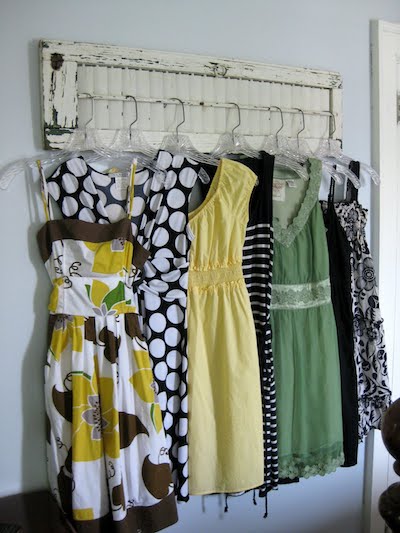
It’s tempting to pile multiple dresses onto regular hangers or the multi-tiered versions. But that also makes it harder to see what you actually have in your closet.
“You need to keep clothing to one item per hanger,” says Lowenstein. “A lot of people will keep two dresses on one hanger or get those hangers that swing out to hold five pairs of pants. Those multi-clothing hangers are great for off-season clothing, but not every day.”
That might seem like a waste of space, but if you’re using the same types of hangers — and not a chaotic mismatch of wooden hangers, plastic ones, and the flimsy wires you get from the dry cleaners — everything should fit in place.
7. And they should be nice hangers

Hangers seem like a cheap, throwaway item you don’t have to worry about. But they have a bigger impact on your clothes and your closet than you think.
“A lot of people don’t invest in good hangers. They buy generic ones that aren’t good for long-term use,” says Sullivan. “You should invest in the best hangers you can afford.”
She recommends looking beyond the “huggable” hangers you find at Bed Bath & Beyond and bearing in mind what kind of clothing will go on the hanger. An expensive silk dress needs a different type of hanger than a cotton maxi.
Learn more: How to store luggage
8. Use straps to make sure your dress is properly fitted
Many dresses come with thin straps sewn into the inside. They don’t seem to serve any purpose — until you hold a hanger.
As stylist Kristie Hale demonstrates in the video above, you should be looping those straps around the neck of the hanger. This helps the dress hang perfectly in place, which prevents wrinkles you’ll have to iron out later.
9. Clip skirts to their hangers inside out

Storing skirts on hangers with adjustable clips is a smart idea. The sliding clips accommodate all sorts of sizes without stretching the fabric.
That way, you avoid the creases that come with folding a skirt over a traditional hanger bar. But those clips can leave marks, particularly on delicate skirts.
If you hang the skirt inside out, though, the marks are suddenly on the side of the garment that no one sees. As an added bonus, it keeps the skirt exterior from rubbing against other fabrics hanging next to it and accidentally knocking some beading or elaborate stitching loose.
10. Take stained dresses and skirts to the dry cleaners stat
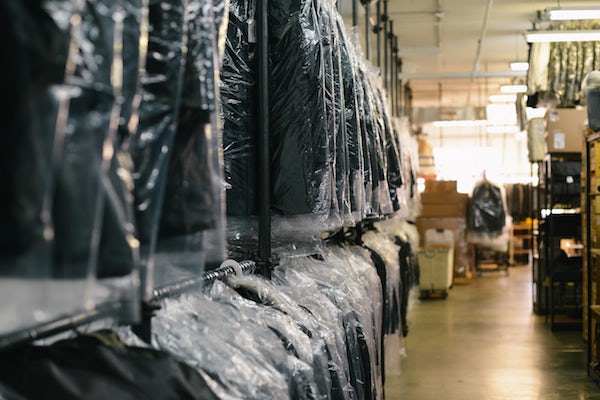
When you accidentally splash sauce on a “dry clean only” dress or skirt, it’s important to act fast.
First, dab (don’t rub) away as much of the liquid as you can. Then take the dress or skirt to the dry cleaners as soon as you can. Waiting on a trip to the dry cleaners gives the stain more time to set, so time is of the essence here.
Describe the stain stats (e.g., what you spilled and when you spilled it) to the person behind the counter in as much detail as you can. That way, they’ll know the best way to treat the problem area.
11. But don’t leave anything in the dry cleaning bag
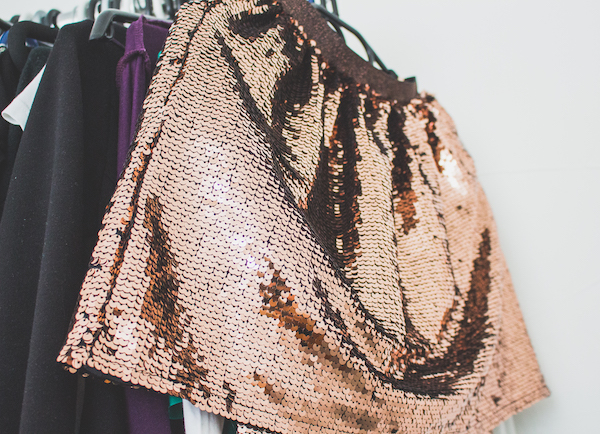
When you come back with a mountain of skirts, dresses, and suits from the dry cleaners, all you want to do is clump them on the closet rod and move on to more important things.
Fight that urge.
As Sullivan cautions, leaving clothes in the plastic dry cleaning bags is “definitely not a good idea.” For one, the bag will trap in lingering moisture from the cleaning process, which can cause mildew.
Plastic bags also contain something called butylated hydroxytoluene (BHT). This antioxidant can discolor or yellow your clothes when it comes into contact with the wrong things in the air.
So don’t chance it: Remove and recycle all the plastic bags from your dry cleaning the second you get home.
12. And don’t clean them too much

There is such a thing as being too clean, particularly when it comes to your clothes. Frequent dry cleaning visits can deteriorate the fabric on your dresses and skirts, not to mention break your bank account.
The big dirty secret:
You can wash a lot of “dry clean” clothes yourself.
As Cosmopolitan advises, check labels for “dry clean only” versus “dry clean” phrasing. If you see “dry clean only,” stick with the pros. If you see “dry clean,” it’s applied to polyesters and nylons that you can usually hand-wash at home (just make sure to lay them flat to dry).
13. Seriously, cool it

In addition to those delicate clothes we just discussed, you may be overcleaning the dresses and skirts that fit safely in your washing machine.
You can certainly wear your skirts, which are far away from your sweat glands, at least three times before cleaning. Unless you get marinara on them. Then wash them pronto.
14. Approach suede and leather skirts with caution
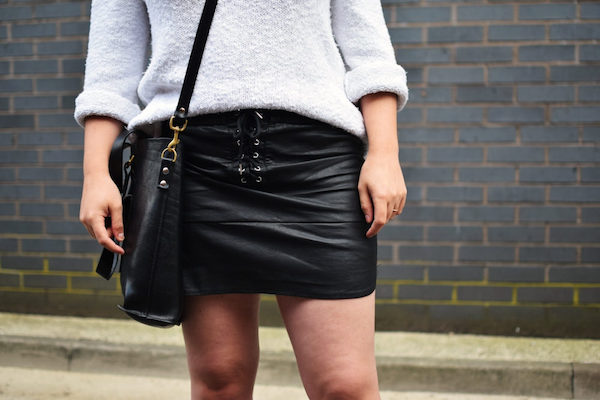
While it’s important to attack any leather or suede skirts at the first sign of staining, be extra careful with how you handle cleaning these materials.
If it’s just dirt, a brush can probably take care of the problem. A damp cloth or saddle soap can remove minor spots on leather, but don’t try that on suede. Suede can become hardened and discolored when it’s exposed to water.
For serious stains, consult a professional. Your dry cleaner can usually refer you to a leather specialist.
Want to avoid these issues in the first place?
Get a commercial waterproof protectant spray for all your leather and suede items.
15. Only keep fabulous skirts and dresses in your closet

You already know how to filter your clothes collection by season, style, and color.
But here’s one not-so-obvious tip:
Only store and care for skirts and dresses that make you feel fantastic.
“Fill your closet with items that you love and feel great in,” says Lowenheim. “Every time you get dressed, you should feel fabulous. I always say that you want to go out of your house and feel that if you run into someone you haven’t seen since high school, you won’t feel bad about your outfit.”
So if you have a jean skirt you’d hate for Heather Finley from ninth-grade government class to see, pitch it and find something you love wholeheartedly.
If you’d rather dedicate your limited closet space to pants, let Clutter store your dresses, skirts, and other out-of-season clothes. Our free storage bins can fit every casual skirt and sundress you own, and our free wardrobe boxes can safely store your more formal frocks.
After you schedule a pickup and pack your stuff, we’ll pick up everything, store it in our secure storage facility, and deliver it back once warm weather arrives. Except for maybe those lucky Los Angelenos who enjoy skirt season year-round.
Troubleshooting Tips for Common Issues Like Wrinkles, Damage, and Space Constraints
Wrinkles
Ah, wrinkles—the arch-nemesis of anyone who wants to look presentable. You know the drill: you hang your dress meticulously, only to pull it out and wonder if it moonlighted as an accordion.
- Use a Steamer: Because who doesn’t love spending their hard-earned money on a gadget that spits hot water? But hey, it’s quicker and kinder to your clothes than an iron. Just hang your dress and let the steam magic happen. Now you can pretend you live in a high-end hotel.
- Hanging Right: Invest in padded or wooden hangers, because your clothes deserve better than those flimsy wire ones you get from the dry cleaners. Those wire hangers are perfect if you want your skirts to have more wrinkles than a shar-pei puppy.
- Garment Bags: For those high-maintenance dresses that wrinkle if you even look at them wrong, garment bags are your new best friend. They keep the fabric smooth and make you feel like you’re storing royalty.
Damage
Nothing says “I don’t care about my clothes” like yanking them out of an overstuffed closet, only to find snags, stains, or holes. Let’s prevent your wardrobe from looking like it survived a natural disaster.
- Avoid Overcrowding: Who doesn’t love trying to pry a hanger out of a closet so packed it could double as a clown car? Give each piece its personal space, like it’s a VIP at a posh nightclub.
- Moth Protection: Moths are the party crashers of your closet. Toss in some cedar blocks or lavender sachets to keep them at bay. They’ll make your closet smell like a forest or a granny’s living room, but at least your clothes will be safe.
- Stain Removal: Spilled wine on your favorite dress? Don’t wait until it looks like a modern art piece. Have a gentle stain remover handy and follow the care labels. It’s like having a first aid kit but for your wardrobe.
- Protective Covers: Use protective covers for those extra-special pieces. It’s like wrapping your clothes in bubble wrap, but way more fashionable.
Space Constraints
Living in a small space? Perfect! Now you can play an exciting game of “Where Can I Cram This Skirt?” Here are some tips to keep your sanity:
- Multi-tier Hangers: These hangers let you stack your skirts like you’re building a Jenga tower. Just hope it doesn’t come crashing down when you try to remove one.
- Drawer Dividers: For those who prefer to fold their skirts, drawer dividers are a must. They keep everything neat and prevent your skirts from becoming a tangled mess. Imagine, no more fishing out a single skirt from a heap of fabric chaos!
- Under-bed Storage: Perfect for when you’ve run out of closet space. Just slide some boxes under your bed and voila, instant storage! It’s like hiding your mess where no one can see it.
- Vacuum-Sealed Bags: Got bulky items? Vacuum-sealed bags will shrink them down to a fraction of their size. It’s like a magic trick—now you see the space, now you don’t. Great for those “just in case I need this in the next six months” clothes.
By following these tips, you can pretend you have your life together and keep your skirts and dresses looking fabulous. Who knew organizing could be this much fun?
schedule a pickup with Clutter, now!
Conclusion
Organizing skirts and dresses might seem like a mundane task, but with the right tips and a touch of sarcasm, it can transform from a chore to a somewhat tolerable activity. By choosing the right storage methods, hanging and folding with care, and utilizing clever space-saving solutions like drawer dividers and stackable containers, you can keep your wardrobe in top shape.
So, embrace the challenge of organizing your skirts and dresses. With these troubleshooting tips, you can face the common issues head-on and emerge victorious, with a wardrobe that not only looks good but also functions seamlessly. Your skirts and dresses will thank you, and you might just find yourself enjoying the process, even if just a little bit.
FAQs on Storing Skirts and Dresses
Q: What is the best way to store skirts?
The best way to store skirts depends on the fabric and available space. Generally, using padded hangers for delicate fabrics or hangers with clips for other skirts helps maintain their shape. Alternatively, folding sturdier skirts neatly and storing them in drawers or on shelves can save space and keep them wrinkle-free.
Q: How can I store skirts to prevent wrinkles?
To prevent wrinkles, hang skirts on padded hangers or hangers with clips that won’t leave marks. If you prefer to fold them, make sure to fold them neatly and place them in drawer dividers to keep them separated and reduce creasing. For long-term storage, consider using garment bags to protect them from dust and further wrinkling.
Q: What types of hangers are ideal for storing skirts and dresses?
Padded hangers are ideal for delicate dresses to prevent stretching and creasing. For skirts, hangers with adjustable clips are best, as they allow you to hang skirts without causing wrinkles or damage. Multi-tier hangers can also be useful for saving space while storing multiple items.
Q: What’s the best way to store skirts and dresses that are out of season?
For out-of-season skirts and dresses, use clear stackable storage containers or vacuum-sealed bags to save space and protect them from dust and moisture. Label the containers for easy identification. Store these containers in a cool, dry place, such as under the bed or in a closet.
Q: How should I deal with stains on skirts before storing them?
Always treat stains before storing sthe kirts. Follow the care label instructions for stain removal, using appropriate stain removers for the fabric type. Ensure skirt is completely clean and dry before storing it to prevent mold or further damage. This helps keep your skirts in pristine condition and ready for their next wear.


